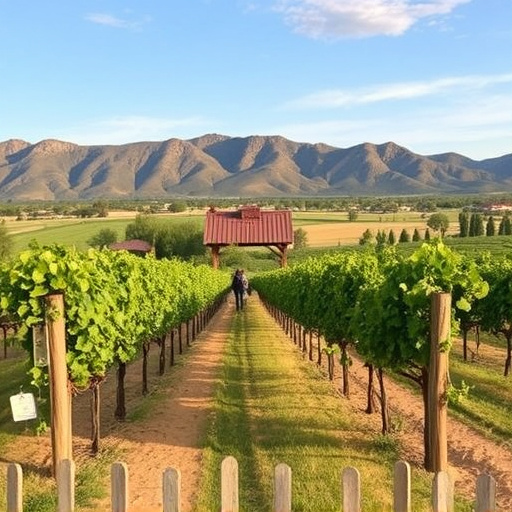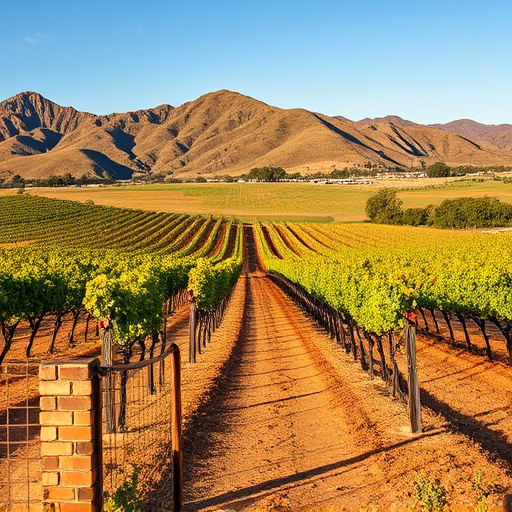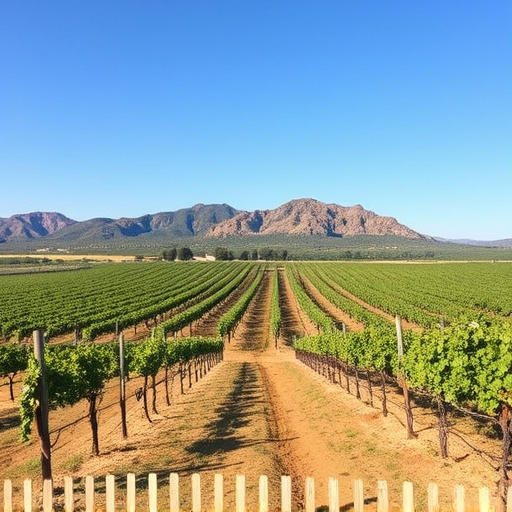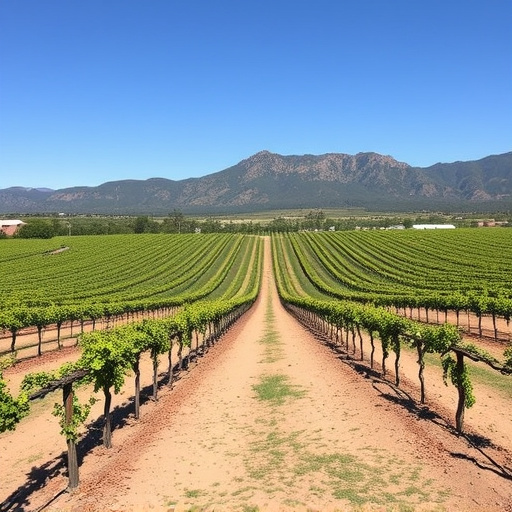Sonoita, Arizona's wine country thrives due to unique geographic settings creating diverse microclimates across numerous vineyards. This varies grape varieties and winemaking techniques, resulting in a rich tapestry of wines from crisp higher-elevation Pinot Noir to richer lower-lying reds. The region's high elevation, soil types, and sun exposure significantly influence each wine's character, making Sonoita a captivating destination for wine enthusiasts exploring terroir.
“Uncover the nuanced world of high-elevation wines from the vibrant vineyards in Sonoita, Arizona. This article takes you on a journey through the neighboring estates, exploring how terroir shapes each unique wine. From geographic advantages that contribute to ideal grape growing conditions, to diverse winemaking practices, we delve into the secrets behind Sonoita’s distinct wine profiles. Discover the art of comparing different grape varieties and learn how to appreciate the intricate flavors these vineyards offer, making them a must-visit for wine enthusiasts.”
- Exploring Sonoita's Wine Country: A Geographic Advantage
- Terroir Variations: The Unique Characteristics of Each Estate
- Grape Varieties: Comparisons in Planting and Harvest
- Winemaking Practices: Techniques Shaping Taste Profiles
- Tasting Notes: Unveiling Distinctive Flavors and Aromas
- Consumer Insights: How to Appreciate the Differences
Exploring Sonoita's Wine Country: A Geographic Advantage

Sonoita, Arizona, is a hidden gem nestled amidst the picturesque Santa Catalina Mountains, offering a unique geographic advantage for its thriving wine country. This region boasts an array of vineyards in sonoita az, each positioned at varying elevations, contributing to a diverse and distinct terroir—a key factor in winemaking. The mountains’ influence creates microclimates that allow different grape varieties to flourish, resulting in a wide range of wine styles.
The elevation ranges provide a fascinating opportunity for winemakers to experiment with various grapes and techniques. Higher elevations offer cooler temperatures, ideal for cultivating delicate grape varieties like Pinot Noir and Riesling, known for their crisp acidity and vibrant flavors. In contrast, lower-lying vineyards benefit from warmer climates, catering to robust reds such as Syrah and Tempranillo, which develop rich, complex characteristics. This diverse landscape encourages a rich tapestry of wines, ensuring that visitors can explore and appreciate the unique offerings of each Sonoita estate.
Terroir Variations: The Unique Characteristics of Each Estate
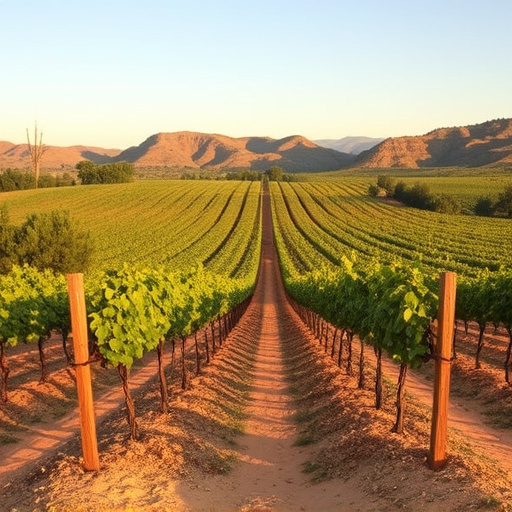
The vineyards in Sonoita, Arizona, are nestled in a unique geographical setting, offering a diverse range of microclimates and soil types that contribute to the distinct character of each estate’s wines. Terroir variations play a significant role in shaping the flavors and aromas of the grapes grown here.
Each neighboring estate experiences slightly different conditions due to factors like varying elevations, aspect, and proximity to the surrounding mountains. These differences translate into varied grape ripening rates, sugar levels, acidities, and flavor profiles. For instance, higher elevation vineyards often benefit from cooler temperatures, leading to slower ripening and preserving a brighter acidity, while lower-lying areas may experience warmer days and sunnier conditions, encouraging richer flavors and higher alcohol content in the grapes. Such variations ensure that wine enthusiasts can discover a wide array of unique expressions from each Sonoita estate, making it a captivating destination for those interested in exploring terroir and its impact on viticulture.
Grape Varieties: Comparisons in Planting and Harvest

In the heart of Arizona’s Sonoita wine country, grape varieties play a pivotal role in shaping the unique characteristics of each estate. The region’s high elevation vineyards, nestled among rolling hills, offer distinct advantages for cultivating specific strains. While many neighboring estates share similar climates, variations in planting and harvest practices highlight the art of viticulture.
For instance, some Sonoita wineries prefer planting traditional European grape varieties like Cabernet Sauvignon and Merlot, which thrive in cooler temperatures. These grapes are known for their robust flavors and complex aromas, making them a staple in producing age-worthy reds. In contrast, others embrace more heat-loving strains such as Zinfandel and Grenache, which contribute to vibrant, fruit-forward wines. The timing of harvest also differs; earlier collections capture the crispness of high-altitude grapes, while later picks allow for deeper colors and richer tastes, showcasing the diverse approaches among Sonoita’s vineyards in Arizona.
Winemaking Practices: Techniques Shaping Taste Profiles
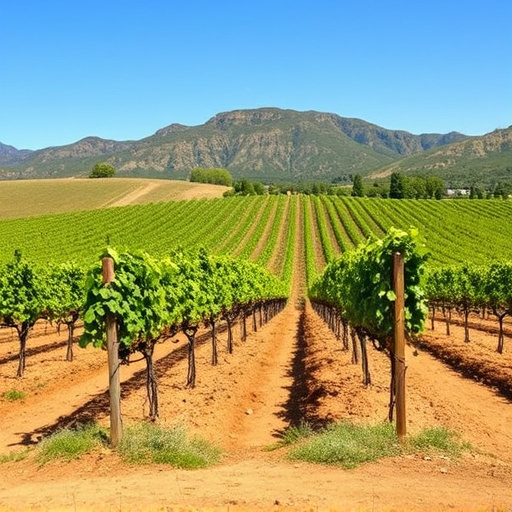
The winemaking practices employed by neighboring Sonoita estates play a pivotal role in shaping the distinctive taste profiles of high-elevation wines from this vibrant Arizona region. One notable technique is the use of native yeast, which adds complexity and unique aromatics to the final product. These wild yeasts, often found on the grapevines themselves or in the local environment, contribute to a more intricate flavor profile that can differ from wines made with cultivated yeasts.
Additionally, winemakers in Sonoita utilize specific barrel aging methods, experimenting with different types of oak and aging durations to impart subtle vanilla, spice, and toasted notes. The high elevation and arid climate of these vineyards also influence the wine’s acidity and tannin structure, creating a balance that distinguishes Sonoita wines from their lower-altitude counterparts. These combined practices result in a diverse range of high-quality wines, each with its own distinct character, reflecting the unique terroir of the Sonoita vineyards.
Tasting Notes: Unveiling Distinctive Flavors and Aromas
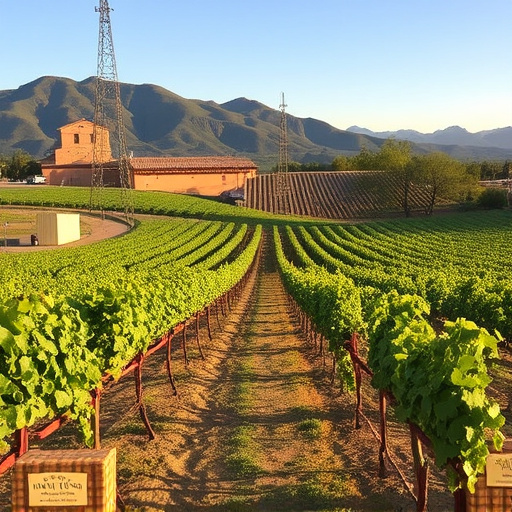
When exploring the wines from high-elevation vineyards in Sonoita, Arizona, one of the most captivating aspects is the unique flavor profile each estate offers. These vineyards, nestled at elevations exceeding 3,500 feet, present distinct characteristics that influence the sensory experience. Tasters often detect notes of bright citrus and crisp green apples, reflecting the region’s cooler climate. The aromatic landscape may include hints of herbal and floral nuances, adding complexity to the overall experience.
The terroir of these neighboring Sonoita estates contributes to the wines’ individuality. Some palates might appreciate the vibrant acidity and refreshing finishes, while others could savor the deeper, more concentrated flavors. Each wine tells a story of its specific vineyard, soil type, and microclimate, making the tasting experience both educational and delightful. These distinctive tastes showcase the region’s potential to produce world-class wines with their own unique identity.
Consumer Insights: How to Appreciate the Differences
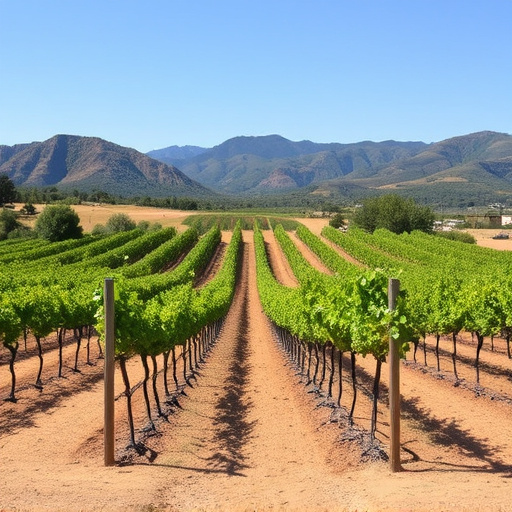
When comparing high-elevation wines from neighboring Sonoita estates, consumers can appreciate subtleties that often distinguish one vineyard from another. The unique terroir of each vineyard, shaped by factors like soil composition, sun exposure, and elevation, imparts distinct characteristics onto the wine. For instance, vines grown at higher elevations typically benefit from cooler temperatures, resulting in slower ripening and a higher acid content. This can translate into wines with crisp acidity and vibrant fruit flavors.
To fully appreciate these differences, consumers should look beyond the label and engage their senses. Observe the color of the wine; elevated areas often produce wines with deeper, more intense hues. Smell for subtle aromas that hint at the specific terroir—a hint of herbal notes from a south-facing slope or floral scents from a north-facing one. Taste each wine carefully, noting its balance, body, and finish. By taking the time to explore these nuances, wine enthusiasts can gain a deeper understanding and appreciation of the diverse offerings from the vibrant vineyards in Sonoita, AZ.
The vineyards in Sonoita, AZ, offer a diverse range of high-elevation wines, each with its own distinctive character. By exploring the unique terroir, comparing grape varieties, and understanding winemaking practices, consumers can fully appreciate the nuanced flavors and aromas that these neighboring estates have to offer. Navigating these variations allows for a deeper connection to the region’s vibrant wine country and enhances the overall experience for both enthusiasts and those new to the world of Sonoita wines.
